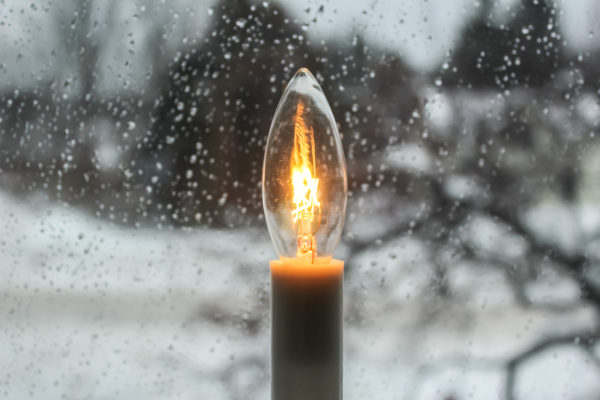Although winter is still a few weeks away, it’s never too early to start preparing for cold weather. With cooler temps usually comes those dreaded high energy bills. Whether you’re looking to go greener at home or just save a little extra green in your wallet, there are lots of things you can do to save energy and cut down on the cost of your home energy bills. Check out these 13 tips to not only save energy, but save money and stay comfortable in the cold winter weather.
- Go Natural. The sun is an amazing source of free heat! Open the curtains on your south-facing windows during the day to naturally heat your home. Close the drapes at sundown to retain this heat at night.
- Use Ceiling Fans. Ceiling fans can be used to get better airflow in your home. Running your fans counterclockwise can push hot air upwards in the summertime. Running them clockwise pushes warm air down in the wintertime.
- Adjust Your Thermostat. During the day, set your thermostat as low as possible to be comfortable. Adjust the temperature up at night before bed. The US Department of Energy reports that you can save about 10% per year on your utility bills just by turning your thermostat down by 10-15 degrees for 8 hours a day. One way to do this is to install a programmable thermostat in your home. This allows you to reduce the heat in your home while you’re out for the day and increase the heat before you get home in the evening.
- Bundle Up. Don’t shed your sweaters once you get home. Wear warm sweaters and socks. Lay area rugs throughout your home to insulate the floor. Keep throw blankets on the couch to wrap up in. Consider using flannel sheets and warm comforters in the winter months.
- Heat What You Need. Only heat the rooms you use most often. If you have rooms that you don’t use regularly (like a guest room or a storage room), close off and seal the vents to those rooms. This will not only make your home more energy efficient but will redirect the flow of air to the rooms you use more often. The Department of Energy reports that setting your thermostat to 62 degrees and using space heaters where needed can save you up to $200 per year on energy bills.
- Get Rid Of Drafts. Use heavy duty clear plastic to cover drafty windows. You can either use plastic sheets on frames or tape clear plastic film to the inside of window frames during the winter months. Make sure the plastic is sealed tightly to the frame. Use tight-fitting, insulating drapes or shades on windows that feel drafty.
- Don’t Forget The Fireplace. Keep the fireplace damper closed unless you have a fire burning. Keeping the damper open lets warm air escape right through the chimney. If you never use your fireplace, plug and seal the chimney flue. Install tempered glass doors and a heat-air exchange system that blows warmed air back into the room. Check the seal on the flue damper and make sure it is as snug as possible. Add caulking around the fireplace hearth.
- Insulate. Americans lose hundreds of thousands of dollars each year from heated and cooled air escaping through poor or improper insulation. Make sure your home is properly insulated. Seal air leaks around utility cut-throughs for pipes, gaps around chimneys and recessed lights, and unfinished spaces behind cupboards and closets. Install Energy Star doors and windows and use weatherstripping around them.
- Check Your Furnace. Make sure your furnace is kept clean and unblocked. This reduces energy consumption and helps you save money. Check your furnace filter monthly and replace it when it gets dirty.
- Use A Humidifier. During the winter, the air inside your home can become very dry. Moist air not only feels warmer, but also holds heat better. Using a humidifier can help your home feel warmer even when you have your thermostat set at a lower temperature. You can also increase the moisture in your home with houseplants.
- Limit The Exhaust. Exhaust fans in your kitchen and bathroom pull warm air that rises to the ceiling out of your home so only use them when absolutely necessary. Make sure to shut them off when you are done.
- Lower Your Water Heater. Lower the cost of using your hot water by lowering the temperature setting to warm (120 degrees Fahrenheit).
- Switch to LED. LED lights use 75% less energy and last 25 times longer than incandescent lights. They also don’t emit as much heat as traditional lights so they are much safer to use. Replace your household light bulbs with LED bulbs. This also applies to your holiday lights which also come in an LED variety. Always unplug your holiday lights when leaving your home or going to bed or use a timer if possible. Unplug small appliances when they are not in use. If you don’t want to have to remember to unplug all of them, consider using a power strip to turn all of them off at once. Holiday lights and appliances will continue to draw power even when they are not in use, increasing your energy bill without you even using them!

